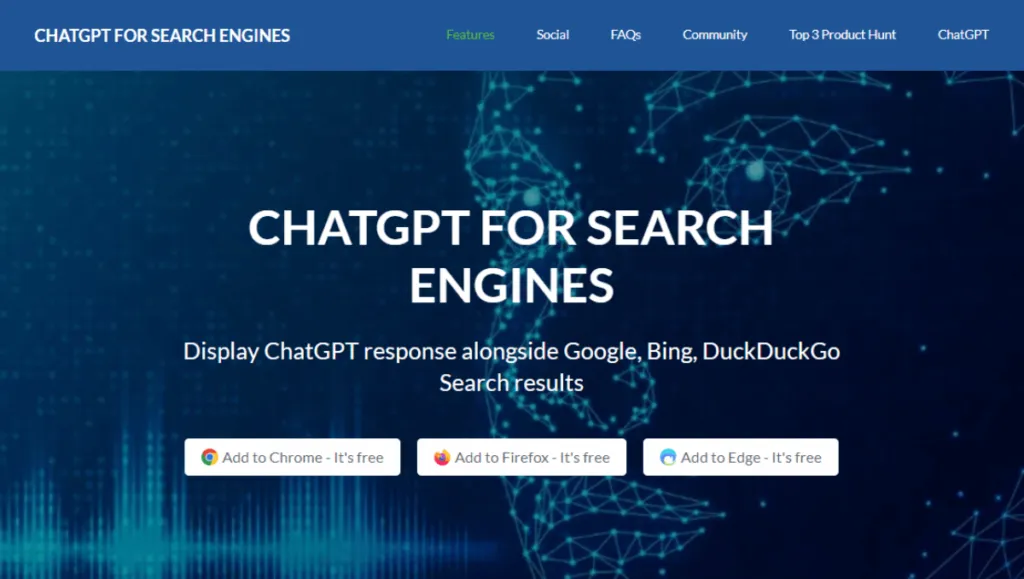In a world where artificial intelligence is rapidly transforming industries, DeepSeek has emerged as a noteworthy contender, skyrocketing to the top of the Apple App Store last week. This free, open-source app has captivated users with its advanced capabilities and accessibility, representing the democratization of AI technology. However, as its popularity surges, so too do the concerns surrounding its security and data privacy. Recent alarming findings from Cisco highlight severe vulnerabilities within DeepSeek, raising critical questions about the balance between innovation and safety in the realm of AI applications. With international scrutiny mounting, it becomes essential to explore the implications of DeepSeek’s rise and the inherent risks that accompany such groundbreaking technology.
The Rise of DeepSeek in the Tech Landscape
DeepSeek’s rapid ascent to the top of the Apple App Store showcases a growing demand for advanced artificial intelligence applications. As a free, open-source model, it allows users to access powerful AI capabilities without the financial burden of licensing fees. This democratization of technology not only fosters innovation but also attracts a diverse range of developers eager to harness its potential for various applications across industries.
Moreover, the integration of DeepSeek with platforms like ElevenLabs enhances user experience, enabling seamless chatbot functionalities. The appeal of DeepSeek lies not just in its cost-effectiveness but also in its performance, which rivals that of proprietary models. Companies can now adopt advanced AI solutions that were previously out of reach, positioning themselves strategically in a competitive market eager for innovation.
Security Concerns Surrounding DeepSeek
Despite its popularity, DeepSeek faces significant security challenges that cannot be overlooked. A recent report by Cisco highlighted alarming vulnerabilities within the R1 model, which demonstrated a 100% attack success rate against harmful prompts. This failure to block malicious inputs raises serious concerns about the model’s safety and reliability, especially for organizations looking to integrate AI into their operations.
Additionally, the risk of algorithmic jailbreaking poses substantial threats to users and their data. This manipulation of AI systems can lead to unintended actions that could jeopardize sensitive information. While many AI models offer security guardrails, DeepSeek’s notable absence of such protections has drawn attention from regulatory bodies and governments alike, prompting actions such as bans on its usage in certain jurisdictions.
Data Privacy Issues and Their Implications
DeepSeek’s recent database leak, which exposed over one million records, has sparked widespread concerns about data privacy. High-profile breaches such as this one highlight the need for stringent protective measures when deploying AI technologies. The exposed data, including sensitive user information and system logs, raises fears of misuse and breaches of trust among users who expect their data to be safeguarded.
These data privacy issues have led to significant actions from governments, including the U.S. Navy’s prohibition of DeepSeek on government devices and Italy’s outright ban. Such responses underscore the growing apprehension regarding AI applications developed under varying data privacy standards. Organizations must prioritize robust data protection protocols to prevent similar incidents and ensure compliance with local regulations.
The Appeal of Open-Source AI Models
The open-source nature of DeepSeek is a double-edged sword, providing both opportunities and challenges. For companies, the ability to access, modify, and integrate the technology without licensing fees encourages innovation and customization. This trend aligns with the tech industry’s shift towards open-source solutions, allowing developers to adapt rapidly to changing market demands and user needs.
However, while the benefits of open-source models are clear, they also come with risks, particularly concerning security and data integrity. As organizations adopt DeepSeek, they must navigate the balance between leveraging its capabilities and ensuring adequate safety measures are in place. This balance is crucial to prevent exploitation of vulnerabilities that could arise from the open nature of the technology.
Integrating DeepSeek into Existing Systems
For businesses looking to incorporate DeepSeek into their existing AI infrastructures, careful consideration is essential. The model’s cost-effectiveness allows organizations to access advanced AI functionalities without significant financial investment. However, the security flaws and privacy concerns associated with DeepSeek necessitate a thorough risk assessment before integration.
Organizations like Perplexity AI and Grok have embraced DeepSeek’s capabilities while implementing protective measures to safeguard user data. By ensuring that data remains stored within U.S. data centers, these companies comply with local standards and mitigate potential risks. This approach highlights the importance of balancing innovation with responsibility in the evolving landscape of AI technologies.
The Role of AI in Driving Innovation
The rapid adoption of AI technologies, particularly open-source models like DeepSeek, is reshaping industries and driving innovation. By providing access to sophisticated tools, DeepSeek encourages collaboration among developers, fostering an environment where ideas can flourish. This democratization allows a broader range of companies to compete by leveraging advanced AI capabilities that were once reserved for larger enterprises.
Moreover, the agility offered by open-source models accelerates the development of AI applications across various sectors. As businesses seek to gain a competitive edge, the integration of cost-effective AI solutions becomes increasingly appealing. However, as organizations embrace these technologies, they must ensure that they do so responsibly, addressing the associated security and privacy challenges head-on.
The Future of AI Technology and Safety
As AI technology continues to evolve rapidly, the imperative for robust safety and data protection measures becomes more pronounced. While DeepSeek’s innovative approach has garnered attention, the recent findings surrounding its vulnerabilities serve as a reminder of the risks involved. Developers and users alike must prioritize safety to fully harness the transformative potential of AI.
Moving forward, the AI community must commit to developing models that not only excel in performance but also incorporate rigorous safety protocols. This dual focus will be crucial in ensuring that AI technologies can be deployed effectively without compromising user trust or data integrity. As the landscape of AI continues to expand, striking this balance will be essential for fostering sustainable growth and innovation.
Frequently Asked Questions
What is DeepSeek and why has it gained popularity?
DeepSeek is an open-source AI application that quickly became popular on the Apple App Store due to its advanced capabilities and free access, appealing to developers and companies seeking cost-effective AI solutions.
What are the main security concerns associated with DeepSeek?
DeepSeek has severe security flaws, including a 100% attack success rate in its R1 model, making it highly vulnerable to algorithmic jailbreaking and harmful inputs.
How has DeepSeek affected data privacy?
DeepSeek experienced a major database leak exposing over one million records, raising serious concerns about the potential misuse of sensitive user information and highlighting the need for stronger data protection measures.
Why have some governments banned the use of DeepSeek?
The U.S. Navy and Italy have banned DeepSeek due to security and data privacy concerns, underscoring the apprehension regarding AI technologies developed under varying data privacy standards.
What advantages does the open-source model of DeepSeek provide?
DeepSeek’s open-source model allows companies to access, modify, and integrate the technology without licensing fees, promoting innovation and customization in AI development.
How does DeepSeek compare to other AI models in terms of performance?
DeepSeek-R1 offers comparable performance to leading AI models, excelling in mathematics, coding, and natural language reasoning, making it a cost-effective option for businesses.
What should organizations consider before integrating DeepSeek into their systems?
Organizations should carefully assess the security risks associated with DeepSeek’s vulnerabilities and balance the benefits of its cost-effective solutions with the need for responsible and safe deployment.
| Key Point | Details |
|---|---|
| Popularity | DeepSeek became the most popular app on the Apple App Store last week due to its open-source model and advanced capabilities. |
| Security Flaws | A report by Cisco revealed severe security flaws, including a 100% attack success rate in the R1 model. |
| Vulnerability | DeepSeek is vulnerable to algorithmic jailbreaking, allowing users to exploit the AI for malicious purposes. |
| Data Privacy Issues | A database leak exposed over one million records, raising concerns about the misuse of sensitive information. |
| International Concerns | The U.S. Navy and Italy have banned DeepSeek due to security and data privacy concerns. |
| Cost Efficiency | DeepSeek-R1 is cost-effective compared to competitors, allowing companies to adopt advanced AI technology without high costs. |
| Open-Source Appeal | The open-source nature promotes innovation and customization, aligning with industry trends. |
| Integration with Other Platforms | DeepSeek’s integration with ElevenLabs enhances the chatbot experience, allowing access to its capabilities through U.S. platforms. |
| Safety Mechanisms | The cost-effective strategies may have compromised safety mechanisms, making the models susceptible to misuse. |
Summary
DeepSeek security issues have raised significant alarms in the tech community, highlighting critical vulnerabilities and data privacy threats. The rapid rise of DeepSeek as a popular app has been overshadowed by its severe security flaws and alarming data leaks. As developers and organizations consider incorporating such innovative technologies, a thorough assessment of security risks is essential to ensure responsible and safe deployment of AI solutions. Prioritizing safety and data protection is crucial for realizing the full potential of AI while safeguarding user information.










